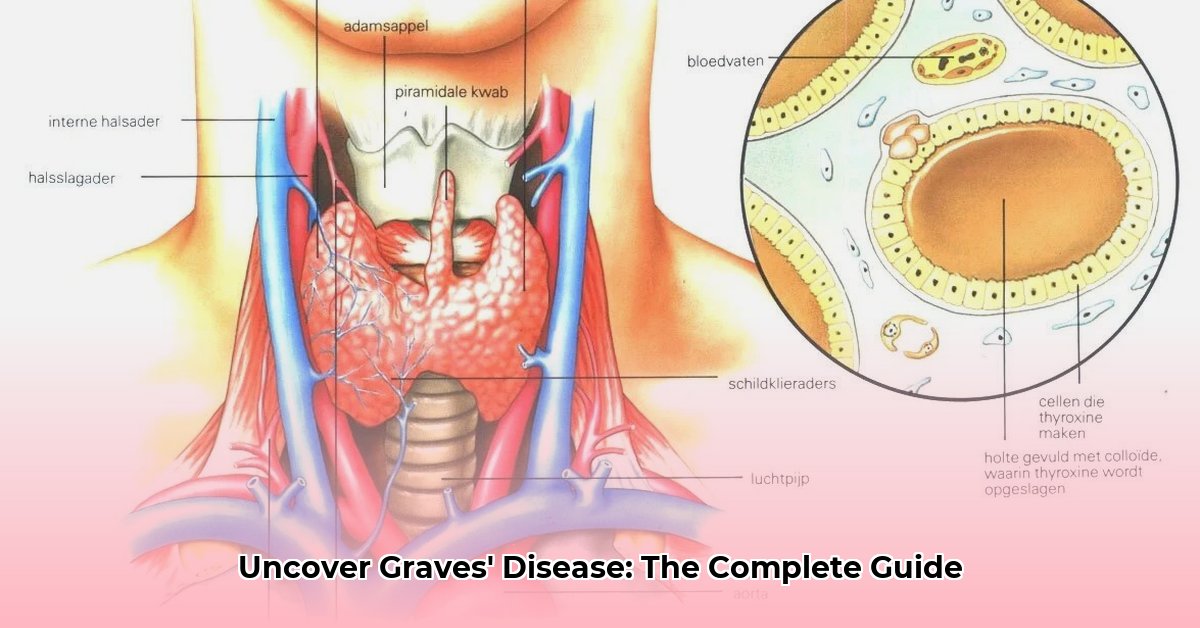
What is Graves' Disease?
Eish, feeling constantly knackered but with a heart that races like a Formula 1 car? Unexplained weight changes got you down? You're not alone, many people experience these symptoms. Sometimes, it’s linked to Graves’ disease, a condition affecting your thyroid – that small gland in your neck crucial for your energy levels and overall health. This guide explains Graves’ disease in simple terms: what causes it, its symptoms, available treatments, long-term management, and where to find support. Think of it as your trusty companion in understanding and managing this condition.
What's Happening Inside?
Let's use an analogy: imagine your thyroid is a car engine. Normally, it runs smoothly, providing the right amount of power. But with Graves’ disease, your immune system (your body's defence force) mistakenly attacks your thyroid, causing it to overwork. This leads to hyperthyroidism (an overactive thyroid). It’s like your car's accelerator pedal is stuck down – everything speeds up!
Recognising the Signs: Common Symptoms
Graves' disease symptoms are often noticeable. You might feel constantly restless, with excessive energy. Your heart might race, and you could lose weight despite maintaining your eating habits. Increased sensitivity to heat is also common. A more serious potential symptom is bulging eyes (Graves' ophthalmopathy), caused by the immune system's attack affecting the eye muscles and tissues. If you experience these, chat to your doctor – early diagnosis is crucial.
Getting a Diagnosis: What to Expect
Diagnosing Graves' disease typically begins with a blood test measuring thyroid hormone levels: TSH (thyroid-stimulating hormone) and FT4 (free thyroxine). High levels strongly suggest hyperthyroidism. To confirm Graves’ disease, your doctor might order a test for thyroid-stimulating immunoglobulins (TSI), antibodies that interfere with thyroid function. Your doctor will also examine your eyes and discuss your symptoms. Aren't regular check-ups a good idea to keep you healthy?
Treatment Options: Getting Back on Track
The good news is that Graves' disease is manageable. Treatment aims to restore normal thyroid hormone levels, easing uncomfortable symptoms. Your doctor might suggest:
Medication: Antithyroid medications slow down thyroid hormone production. Your doctor will monitor you and adjust dosage as needed. These are usually daily pills.
Radioactive Iodine Therapy: This involves a small dose of radioactive iodine that targets and reduces your thyroid's hormone production. This often provides a longer-term solution.
Surgery: Surgery to remove all or part of the thyroid gland might be necessary if medication and radioactive iodine are ineffective or symptoms are severe.
Living Well with Graves' Disease: Long-Term Management
While treatment controls hyperthyroidism, Graves’ disease is an autoimmune condition, meaning the underlying problem remains. Long-term monitoring is essential. Regular blood tests and check-ups with your doctor are vital. Lifestyle also plays a role. Managing stress, maintaining a balanced diet, and avoiding smoking contribute to symptom control. "It's about finding that balance and living your best life," says Dr. Sarah Williams, Endocrinologist at Johannesburg General Hospital.
Potential Complications: What to Watch Out For
As mentioned, Graves’ ophthalmopathy (bulging eyes, double vision, eye irritation) is a possible complication requiring specialized treatment. Early detection and management are crucial. Another possible complication is an enlarged thyroid gland (goitre). Remember, this information is for general understanding and doesn't replace a visit to your doctor.
How to Manage Graves' Disease Long-Term After Radioactive Iodine Treatment
Key Takeaways:
- Radioactive iodine (RAI) is effective, often achieving remission.
- However, long-term quality of life might be slightly lower than with other treatments.
- Careful monitoring and management of hypothyroidism are crucial after RAI.
- Understanding long-term risks and benefits is essential for informed decision-making.
- Regular check-ups with your endocrinologist are vital.
Understanding Radioactive Iodine Treatment (RAI)
RAI is a common treatment for Graves’ disease. It's a simple procedure involving a single dose of radioactive iodine to destroy part of your thyroid. While highly effective, understanding the long-term implications is crucial.
Life After RAI: What to Expect
Life often improves after RAI, but changes are possible. Hypothyroidism (underactive thyroid) is common, requiring lifelong thyroid hormone replacement therapy.
How to Manage Graves' Disease Long-Term After Radioactive Iodine Treatment
Here's a step-by-step approach:
Regular Monitoring: Regular blood tests are vital to ensure thyroid hormone levels remain optimal.
Medication Management: If you develop hypothyroidism (very common after RAI), take your medication as prescribed and report any changes to your doctor.
Addressing Potential Complications: Graves' orbitopathy might worsen after RAI. Discuss this with your doctor.
Lifestyle Considerations: A healthy lifestyle supports your well-being.
Long-Term Risks and Benefits
While RAI has a high success rate, potential long-term effects include a slightly increased risk of certain cancers (evidence is mixed) and potential effects on quality of life, such as fatigue. Open communication with your doctor is essential.
The Importance of Ongoing Care
Managing Graves' disease requires ongoing care and active participation. Regular check-ups, open communication, and a proactive approach are crucial for a fulfilling life.